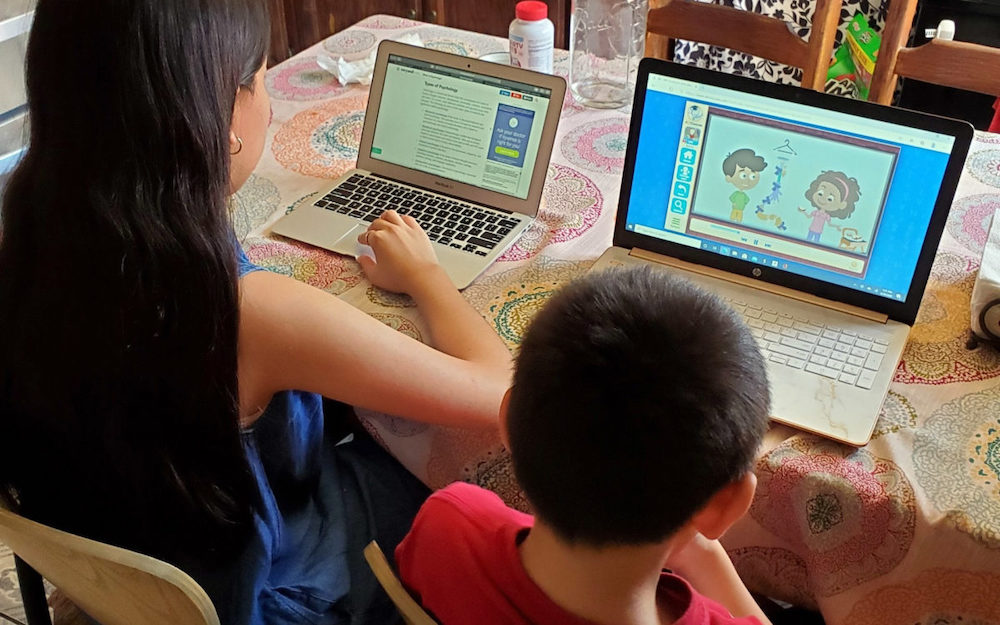Distance learning has complicated things for an education system already facing challenges, but stakeholders are adapting.
As more than 6 million California students head back to school this fall, this year isn’t about fresh notebooks, sharpened pencils and new backpacks. Students, parents and educators are navigating a new world of virtual learning, with the vast majority of California schools remaining online. CalMatters K-12 education reporter Ricardo Cano moderated a PolicyMatters discussion on August 13 that addressed how the struggles of moving to virtual learning have altered California’s education landscape.
Panelists included educators, researchers, students and parents. Don Austin, superintendent of Palo Alto Unified School District, shared his perspective as a district administrator, while Heather Hough, executive director of Policy Analysis for California Education, gave a high level overview of teaching and learning. Lakisha Young, the founder and executive director of Oakland Reach, a parent-run, parent-led group, discussed how families have struggled with online learning. Elijah Tsai, a senior at Lincoln High School in Stockton, and state president of the California Association of Student Councils, provided first-hand insight into what he and his peers experienced with remote learning this spring.
Here are five key takeaways:
- Schools can do more to make virtual learning interactive
Everyone on the panel agreed that students are not learning as well online as they did in person. Hough said that collaboration and interaction with teachers and peers is the most important part of instruction and that while schools need to implement interactive teaching methods at all grade levels, it’s especially important for younger students with smaller attention spans.
“There’s no doubt that it’s harder to do that in a virtual setting, but it’s not impossible,” she said.
- Distance learning is here to stay, but in-person learning could be used as a supplement
Distance learning should be the primary teaching method, according to Hough. She said that reopening schools to every student isn’t feasible and instead, in-person instruction should be used for students with special needs and students without reliable internet, housing, or food.
Austin said students with special needs will be prioritized during reopening, and that his district is trying to find safe ways to provide one-on-one support to special needs students who are accustomed to having that individualized assistance in class.
Meanwhile, Oakland REACH has created a virtual learning hub to support live learning with teachers. The organization fundraised to provide internet hotspots for students without reliable internet, and Young said they plan to provide additional learning loss support in the future. In addition, the organization has offered professional development for teachers.
- Outdoor learning is more complicated than it sounds.
While outdoor learning sounds like a safe alternative because COVID-19 transmission is lower, Austin said it’s much more complicated. Schools would have to negotiate with teacher associations and schools would have to deal with weather and other outdoor variables, like allergies, that could get in the way. But, he said teachers should occasionally take their classes outside to take advantage of California weather.
“Is outdoor healthy and something we should embrace in California? Absolutely,” Austin said. “Does it make sense to set up tents and move everything outside? No, I wouldn’t explore that.”
“We were in an education crisis prior to a health crisis.”
Lakisha Young, Oakland Reach
- Schools need more funding
California schools have fewer educators than other states and are ranked poorly for providing access to mental and physical health services.
Hough said schools need to implement “economies of scale” by centralizing resources like videos and lesson plans to allow teachers to spend more time interacting with students in small groups, but lack of funding means that schools don’t have enough staff to implement those practices.
- Even before the pandemic, California was struggling to provide education
“We were in an education crisis prior to a health crisis,” Young said. She said that even before the pandemic, the schools were failing to provide underrepresented communities with access to a quality education, and she hopes that schools will improve at centering the needs of students from those communities.
Tsai said that administrators need to provide more ways to include student voices and learn about student experiences. “I am one student, and this state is huge,” he said. “There’s 6 million students, and they’re all experiencing different things because of local control.”
Austin said Palo Alto schools have taken this opportunity to adjust school schedules, ensuring that secondary schools don’t start before 9 am, and he’s worked to collaborate with schools and districts across the state. He said schools should work together to solve problems instead of solving them individually.
“Everyone is dealing with exactly the same problems; they might look a little different in your community but the topics are the same,” Austin said. That means now is “a great time for us to try to solve problems together instead of a thousand different approaches to it.”
